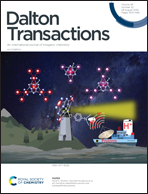Recent advances in MOF-based nanoplatforms generating reactive species for chemodynamic therapy
Abstract
Still today, cancer remains a threat to human health. Possible common treatments to cure this disease include chemotherapy (CT), radiotherapy (RT), photothermal therapy (PTT), and surgical resection, which give unreasonable results because of their limited efficiency and also lead to side-effects. Hence, different strategies are now being exploited to not only enhance the efficiency of these traditional therapeutic methods or treat the tumor cells but also curtail the side effects. A latest method with authentic proof of chemodynamic therapy (CDT) utilizing the Fenton reaction is now gaining importance. This approach, which is developed based on the high level of hydrogen peroxide (H2O2) in a tumor microenvironment (TME), can be used to catalyze the Fenton reaction to generate cancer cell-killing reactive oxygen species (ROS). The selection of materials is extremely important and nanomaterials offer the most likely method to facilitate CDT. Among various materials, metal–organic frameworks (MOFs) which have been extensively applied in medical areas are regarded as a promising material and possess potential for the next generation of nanotechnology. This review focuses on summarizing the use of MOFs in CDT and their synergetic therapeutics as well as the challenges, obstacles, and development.

- This article is part of the themed collection: 2020 Frontier and Perspective articles


 Please wait while we load your content...
Please wait while we load your content...